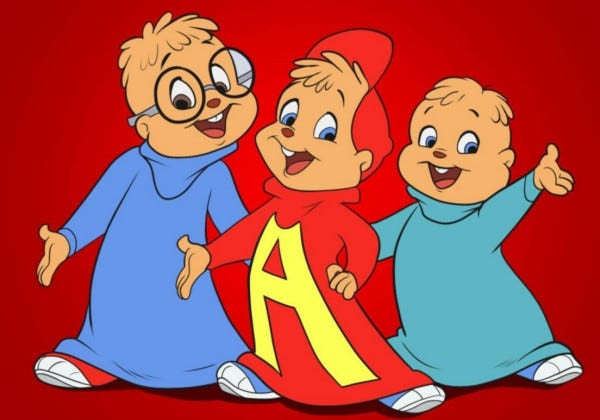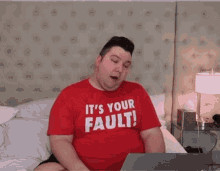The power of imagination is a concept that resonates deeply, freeing us from the constraints of reality and allowing our minds to wander into fantastical realms. It’s comforting to remember that the content of our imagination doesn’t define us, a lesson that can be particularly liberating for creative individuals. This idea is especially relevant when considering the often bizarre and catchy tunes that inexplicably get stuck in our heads – earworms.
Speaking of earworms, childhood often plants the seeds for many of these persistent musical loops. Nursery rhymes, with their simple melodies and repetitive lyrics, are notorious culprits. But beyond these traditional tunes, there’s a fascinating category of earworms: gibberish songs. These songs, built on nonsensical words and sounds, can be incredibly infectious, embedding themselves in our minds for years.
One such gibberish song that has burrowed its way into the collective consciousness, particularly for generations who grew up with animated antics, is “The Witch Doctor” song. While many might associate it directly with Alvin and the Chipmunks, the song’s history is a bit more nuanced, and its cultural impact, especially in its Chipmunks incarnation, is worth exploring.
 Ross Bagdasarian Sr., the creator of Alvin and the Chipmunks, performing as David Seville, the original artist of "Witch Doctor"
Ross Bagdasarian Sr., the creator of Alvin and the Chipmunks, performing as David Seville, the original artist of "Witch Doctor"
The Origins of “Witch Doctor”: David Seville and a Love Potion
Before Alvin and the Chipmunks made “Witch Doctor” a household tune for children, it was originally conceived as a novelty song for adults. In 1958, Ross Bagdasarian Sr., under the stage name David Seville, released “Witch Doctor.” The song tells the humorous tale of a man seeking the help of a witch doctor to win over a woman. The lyrics, punctuated by the now-iconic gibberish phrases “oo ee oo ah ah ting tang walla walla bing bang,” were instantly catchy.
Interestingly, even the original David Seville version incorporated sped-up vocals, a precursor to the signature Chipmunk sound. These background vocals added a playful, slightly otherworldly element to the song, hinting at the whimsical nature that would later be fully embraced by Alvin and the Chipmunks.
The original “Witch Doctor” video, while seemingly innocuous by today’s standards, reflects the cultural context of the late 1950s. It’s a lighthearted, if somewhat stereotypical, portrayal of a witch doctor figure, more comical than culturally sensitive. However, the song’s immense catchiness propelled it to the top of the charts in the US and Canada, proving the broad appeal of its nonsensical charm.
Alvin and the Chipmunks Take on the Witch Doctor
It was in the 1960s that “Witch Doctor” truly cemented its place in popular culture, thanks to Alvin and the Chipmunks. In 1959, inspired by a chipmunk encounter and facing the pressure to create another hit, David Seville transformed his sped-up vocal technique into a full-fledged animated act: Alvin and the Chipmunks.
The Chipmunks’ version of “Witch Doctor,” featured on their 1960 album “Sing Again with The Chipmunks,” amplified the song’s playful and childlike qualities. The high-pitched, squeaky voices of Alvin, Simon, and Theodore singing the gibberish lyrics made the song even more memorable and undeniably geared towards a younger audience.
 A GIF image of Alvin and the Chipmunks dancing and singing, likely from "The Alvin Show" animated series, showcasing their energetic performance of "Witch Doctor"
A GIF image of Alvin and the Chipmunks dancing and singing, likely from "The Alvin Show" animated series, showcasing their energetic performance of "Witch Doctor"
“The Alvin Show,” which premiered in 1961, further popularized the Chipmunks’ rendition of “Witch Doctor.” Animated segments featuring the trio performing the song, often with visual gags and slapstick humor, solidified its association with Alvin and the Chipmunks in the minds of a generation. However, even in this seemingly innocent context, the cultural sensitivities surrounding the witch doctor imagery remained a point of discussion, particularly in retrospect.
“Witch Doctor” in the 21st Century: The Movie Version and Beyond
The enduring appeal of “Alvin And The Chipmunks The Witch Doctor Song” is evident in its continued presence in popular culture. The 2007 live-action CGI film, “Alvin and the Chipmunks,” introduced the song to a new generation. While this modern version might not be considered a critical masterpiece, it undeniably kept the “Witch Doctor” earworm alive and kicking.
For many children and adults in the 21st century, the movie version is their primary point of reference for the song. This highlights the cyclical nature of popular culture, where older songs are rediscovered and reinterpreted for new audiences, often through different mediums like film and animation.
Beyond the movie, “The Witch Doctor” song has continued to be referenced and reimagined in various contexts, demonstrating its lasting impact. From cover versions to parodies, the song’s catchy gibberish and playful rhythm ensure its continued, albeit sometimes ironic, appreciation.
The Enduring Legacy of a Gibberish Earworm
“Alvin and the Chipmunks The Witch Doctor Song” is more than just a silly tune with nonsensical lyrics. It’s a cultural artifact that reflects evolving musical tastes, animation history, and even changing social sensitivities. From its origins as a novelty song for adults to its transformation into a children’s classic through Alvin and the Chipmunks, “Witch Doctor” has proven its staying power as a quintessential earworm.
Whether you find it charmingly nostalgic or slightly cringeworthy in retrospect, there’s no denying the infectious nature of “oo ee oo ah ah ting tang walla walla bing bang.” The song serves as a reminder of the sometimes inexplicable power of simple, catchy melodies and the enduring appeal of gibberish in popular music, particularly when delivered by animated chipmunks.


